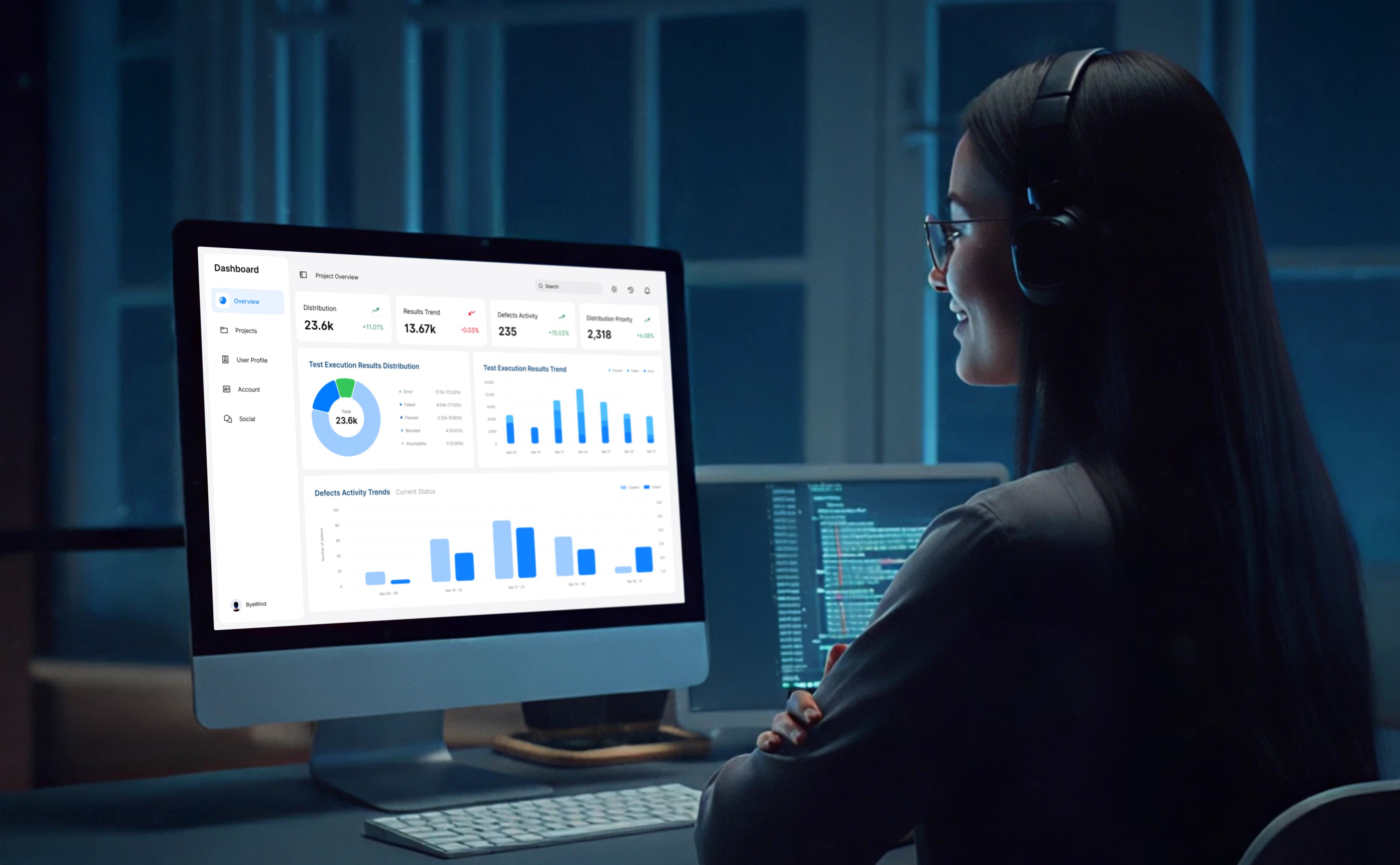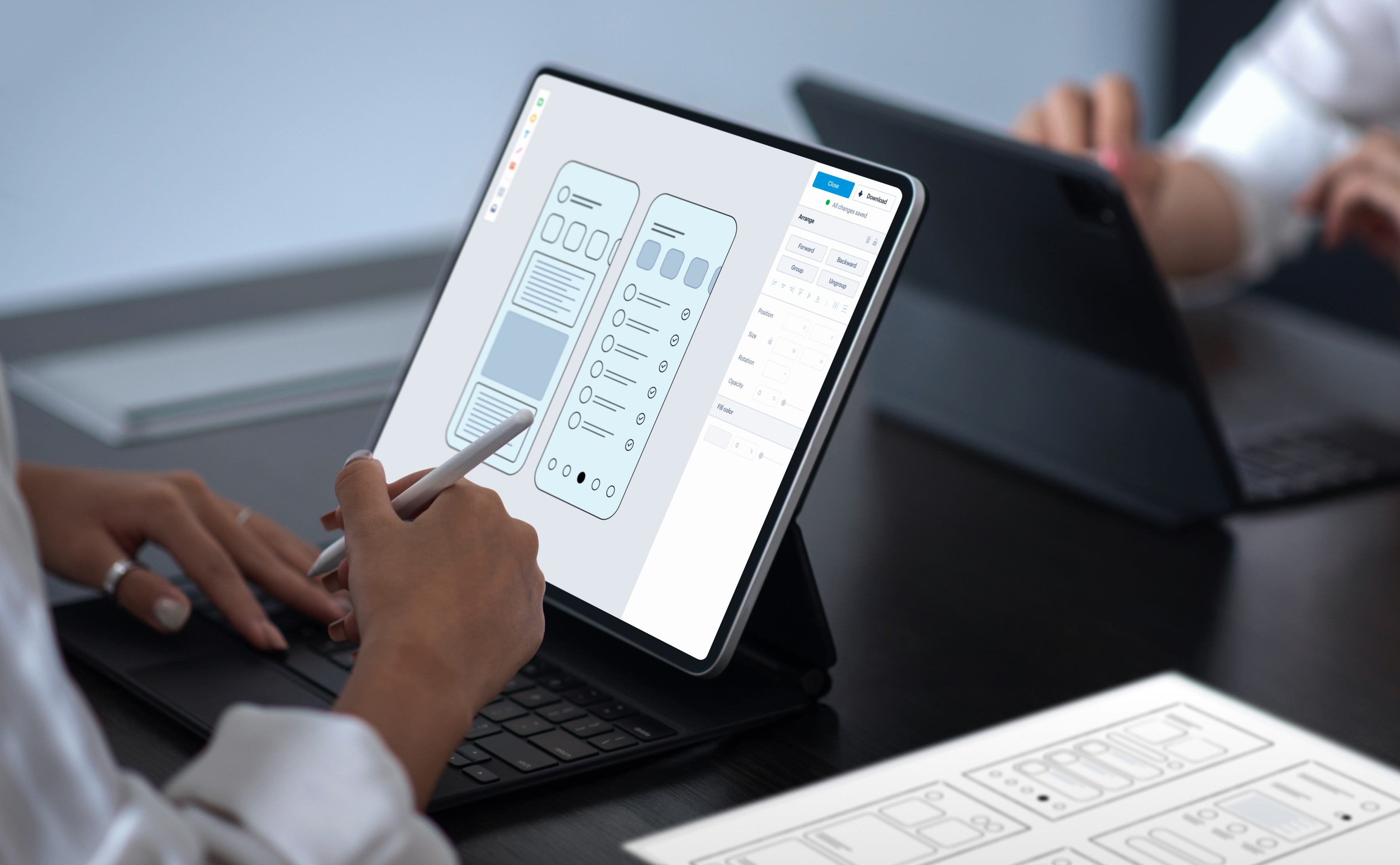RDBMS vs DBMS: Key Differences and When to Use Each Database System

A database is a collection of organized data that can be easily accessed, updated, or controlled. The information stored in the database can be organized seamlessly into rows, columns, or tables. The primary difference between DBMS and RDBMS lies in their underlying structure. The original version of database management, DBMS, lacks several important features and tools. These include data integrity, data security, data access, multiple-user access, and efficient data updating and retrieval. RDBMS, on the other hand, is faster and more systematic, equipped with features that guarantee data consistency and redundancy.
According to Statista, relational database management systems (RDBMS) were the most popular type of database management system (DBMS) in 2022, holding a 72 percent share of popularity. Oracle is recognized as the leading RDBMS globally, with MySQL and Microsoft SQL Server following in the top three positions.
This article provides an in-depth exploration of DBMS (Database Management Systems) and RDBMS (Relational Database Management Systems), their definitions, types, examples, key differences, uses, and the pros and cons of each system. Continue reading to gain a clear understanding of the essential concepts and nuances of both systems.
What Is a DBMS?
A Database Management System (DBMS) is software used by businesses to identify, manage, and create databases, providing controlled access to the data. This system is far more efficient than the traditional file system. DBMS was initially created in the 1960s to store all kinds of data. The database was designed to preserve data while also allowing each business to retrieve information as needed.
Types of DBMS
1. Hierarchical DBMS
In this type of DBMS, the data is organized in a tree-like structure where each record has one parent and can have multiple children. This model is effective for applications that require a clear hierarchy, including organizational charts or file systems. It was one of the first database models and had a significant impact on the development of data storage techniques.
2. Network DBMS
A network DBMS is a data model used to organize data. It has a resemblance to a hierarchical model, but in a network DBMS, it facilitates intricate relationships involving numerous parent and child records, also known as many-to-many relationships.
3. Object Oriented DBMS
It organizes data as objects, a characteristic often associated with object-oriented programming.
Applications with intricate data relationships are better served by OODBs, which can provide benefits such as improved data modeling and integration with object-oriented programming languages.
Examples of DBMS:
- XML database (XML DB): A type of database that stores data in XML format. This allows data to be specified, stored, retrieved, transformed, and exported. It's a document-oriented database that belongs to the category of NoSQL databases. People commonly use them to store structured data relationships between elements of significant importance.
- IMS (Information Management System): It is a hierarchical DBMS developed by IBM. This system manages the organization's information resources through collection, storage, retrieval, and distribution. It ensures that the right data is delivered to the right people at the right time.
- dBASE: It is a widely used database management system, particularly during the 1980s and 1990s. According to reports from CelerData, dBASE is one of the earliest database management systems (DBMS) for microcomputers. It provides a user-friendly interface and a programming language designed for managing data in a tabular format.
What Is RDBMS?
Relational Database Management System (RDBMS) is a more advanced version of the database management system. This system, developed in the 1970s, enables an organization to access data more efficiently than a traditional database management system (DBMS). This is used to store data in the form of tables, with data handled or stored in rows or columns, also known as tuples and attributes in this type of system.
Consider a relational database model to be a spreadsheet; it is a table that stores information about an organization and is divided into columns (attributes) and rows (records or tuples).
Uses of Tables with Rows and Columns
In RDBMS, the data is stored in tables where
- Rows represent the individual records.
- Columns represent data attributes or fields.
Each table has a primary key that uniquely identifies each record and may include foreign keys to connect tables, facilitating complex relationships and queries.
Examples of RDBMS
- MySQL: It is an open-source RDBMS that uses Structured Query Language (SQL) to store and manage data. Web applications and other applications that require data storage and retrieval commonly use it.
- PostgreSQL: It is an advanced open-source RDBMS known for its compliance with SQL standards and support for complex data types. The robust feature set, scalability, and reliability of this database make it a popular choice for various applications, including web applications, mobile applications, and analytics.
- Oracle Database: It is one of the most potent enterprise-grade RDBMS utilized in extensive applications, including online transaction processing (OLTP), data warehousing, and mixed workloads. It includes features such as built-in AI vector search and in-database machine learning. It is available in various cloud environments as well as on-premises.
Core Differences Between DBMS and RDBMS
Database Management System (DBMS) | Relational Database Management System (RDBMS) |
|---|---|
| Data is stored in a file format. | Tables are used to store the information. |
| The data stored in DBMS is either hierarchical or navigational in format. | It employs data in the format of a table, where the columns are named as headers and the associated data as rows. |
| The requirements of software and hardware are minimal. | It requires higher software and hardware. |
| It is not supported by normalization. | It can be normalized. |
| Less security. | Advanced security measures are provided. |
| It primarily handles a small volume of data. | Deal with large amounts of data. |
| It can be used in small organizations. | It is widely used in large organizations. |
| Data redundancy is very common. | Data redundancy is reduced with the help of keys and indexes. |
| DBMS is vulnerable to data manipulation due to its low security levels. | RDBMS offers various levels of data security, protecting data from unauthorized manipulation. |
| Only individual data items can be accessed. | The SQL series in RDBMS simplifies the process of retrieving data. Additionally, multiple data items can be accessed. |
| DBMS doesn’t support client-server architecture. | RDBMS supports client-server architecture. |
| Examples: DBase Plus, XML, FoxPro, Windows Registry, etc. | Examples: SQL, MySQL, Server, Microsoft Access, Oracle, PostgreSQL, etc. |
Need a custom DBMS or RDBMS setup?
Let's talkLoading...
Use Cases and Suitability
When to Use DBMS
Database Management Systems (DBMS) are lightweight, single-user systems specifically designed to provide access to one user and manage data at a time. These systems are particularly useful for:
- Personal Data Management: It's an effective tool for managing contact lists, personal calendars, document repositories, and tracking small projects on a single computer.
- Small-Scale Applications: This includes desktop applications or basic mobile apps that need to store data locally, avoiding the complexities associated with multi-user configurations.
- Development and Testing: Developers often utilize a lightweight, single-user database for prototyping, developing, or testing applications in a controlled environment.
- Small Businesses with Minimal Data Needs: This includes local retail stores, small service providers, and microenterprises that do not need concurrent access or require high scalability.
Pros of Database Management System (DBMS)
- Simplicity: DBMSs are easier to set up and operate and require only minimal configuration and maintenance.
- Performance: It is designed for a single user. It focuses on delivering fast response times and a seamless user experience.
- Low Resource Consumption: DBMS is lightweight and requires fewer resources, requiring less disk space, memory, and processing power. This makes them particularly suitable for environments with limited resources.
- Cost-Effective: These systems typically have minimal or no licensing fees and do not necessitate costly hardware or specialized administrators.
- Portability: Most DBMS solutions can be easily relocated or integrated into applications, enabling support for cross-platform usage.
Cons of Database Management System (DBMS)
- Limited Scalability: DBMS cannot manage large user numbers or high data volumes.
- No Multi-User Support: It permits only one user to access the data at a time, which limits collaboration and simultaneous data entry.
- Reduced Feature Set: It has limited advanced features, including robust security, while backup and recovery mechanisms may be less comprehensive compared to enterprise-grade DBMS.
- Not Suitable for Critical or Availability Applications: The absence of redundancy and failover mechanisms renders these systems less suitable for applications that are mission-critical.
When to Use Relational Database Management System (RDBMS)
Relational Database Management Systems (RDBMS) are best suited for environments where structured data, data integrity, and concurrent multi-user access are essential. Common use cases include:
- Enterprise Applications: It encompasses various systems such as human resources management, customer relationship management (CRM), enterprise resource planning (ERP), and inventory management. These systems involve highly interrelated data that must be accessible to multiple users simultaneously.
- Online Transaction Processing (OLTP): All the systems that handle high volumes of real-time transactions, including banking, e-commerce order processing, and airline reservation systems, require an RDBMS.
- Data Warehousing and Business Intelligence: This involves the storage and analysis of large datasets from various sources to facilitate reporting, analytics, and informed decision-making.
- Healthcare: Overseeing patient records, managing prescriptions, and coordinating lab results among various departments while ensuring data accuracy and compliance with regulatory standards.
- Financial Systems: It involves managing ledgers, transaction logs, and fraud detection processes, where maintaining strict data consistency and ensuring security are essential.
Pros of Relational Database Management System (RDBMS)
- Data Integrity: RDBMS enforces strict constraints and relationships on data, which helps minimize redundancy and inconsistency.
- Multi-User Support: It enables multiple users to access and modify the data simultaneously, which is supported by strong concurrency control mechanisms.
- Scalability: It is capable of managing large volumes of structured data and adapting to increasing business demands.
- Query Flexible: RDBMS utilizes SQL, offering robust and versatile capabilities for querying, reporting, and data manipulation.
- Security: It provides robust security features, including user role permissions and encryption to protect sensitive data.
- ACID Compliance: It guarantees reliable transaction processing, which is essential for enterprise applications.
- Mature Technology: RDBMS is well established and supported by extensive documentation and community resources, making it compatible with a wide range of applications.
Cons of Relational Database Management System (RDBMS)
Complex Schema Design: It demands careful planning and specialized expertise to design an efficient database schema.
- Performance Issues: It may experience slowdowns with complex queries or high concurrent user loads if not properly optimized.
- Scalability Limits: Although RDBMS can scale, it may face challenges when managing extremely large datasets at any transaction rate.
- Cost: An Enterprise solution can incur significant expenses related to licensing fees, hardware acquisition, and the need for skilled personnel.
- Not Ideal for Unstructured Data: It is not well-suited for storing or querying unstructured or semi-structured data.
- Maintenance Overhead: It demands ongoing administration, tuning, and backup management.
Conclusion
Database Management Systems (DBMS) and Relational Database Management Systems (RDBMS) are two types of software used for the creation, management, and storage of databases. The basic difference between DBMS and RDBMS is that RDBMS has more advanced features than a traditional database management system. While DBMS stores data in a file format, RDBMS stores the data in a table format.
DBMS and RDBMS are different in terms of structure. As the initial version of database maintenance software, it is deficient in data security, access, integrity, fast retrieval, and multi-user capabilities. RDBMS is an improved version. It is quicker and more efficient, and prevents data redundancy or inconsistency. When comparing the many types of database management systems, RDBMS is the better version, as it is considerably faster and better than DBMS.
Thinking about boosting your database performance? At Webandcrafts (WAC), we develop digital solutions that are secure, efficient, and scalable by utilizing the most appropriate database technologies, whether it be a simple DBMS or a powerful RDBMS. Speak with our experts!
Want to choose the right database for your business?
Let's talkLoading...
Discover Digital Transformation
Please feel free to share your thoughts and we can discuss it over a cup of tea.










